Four ancient capitals of China: Luoyang, Xi'an, Beijing, Nanjing
Today we come to Luoyang City, the head of the four ancient capitals.

Luoyang City, referred to as "Luo", also known as Luoyi and Luojing. In April 2018, it was officially recognized as the first of the four ancient capitals of China.
Luoyang City has more than 5,000 years of civilization history, more than 4,000 years of urban history, and more than 1,500 years of capital history 。
Luoyang is one of the birthplaces of Chinese civilization and the eastern starting point of the Silk Road , the center of the Grand Canal in the Sui and Tang Dynasties , Thirteen dynasties successively established their capitals in Luoyang in history.
There are five major capital ruins in Luoyang City, including Erlitou Ruins, Yanshi Mall Ruins, Eastern Zhou King City Ruins, Han Wei Luoyang City Ruins, Sui and Tang Dynasty Luoyang City Ruins.
As of March 2019, Luoyang City has a total of 3 and 6 World Cultural Heritage Sites including Longmen Grottoes, HanHagu Pass, and Hanjiacang; at the end of 2019, Luoyang City has a total of 82 A-level tourist attractions, 5 A-level scenic spots, and 4A-level or above 30 scenic spots 。
Then I will take you around this oldest old imperial city today.
Part 1: Cultural Attractions
The first stop: it is the Longmen Grottoes, a textbook-level scenic spot
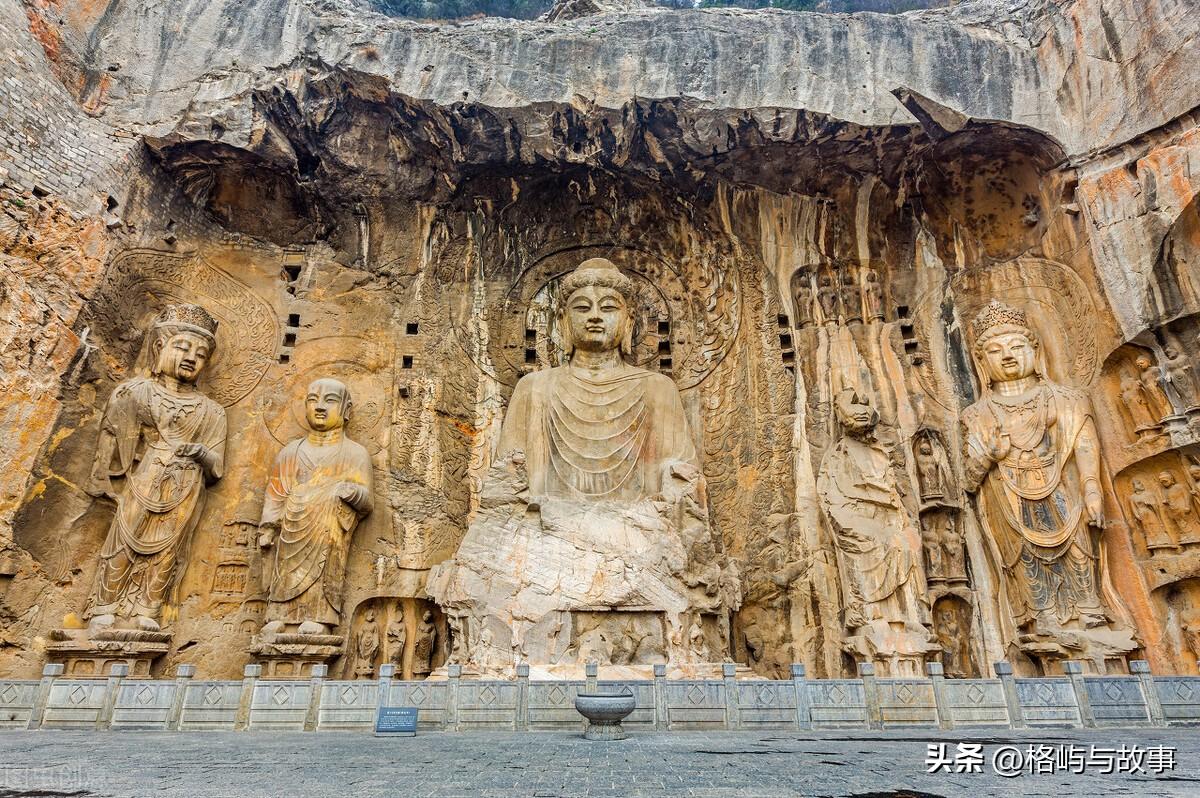

Longmen Grottoes is located in Luoyang City, Henan Province. It is the treasure house of stone carving art with the most statues and the largest scale in the world. It is rated as " The highest peak of Chinese stone carving art ”, It ranks first among the major grottoes in China. Now it is a world cultural heritage, a national key cultural relics protection unit, and a national AAAAA-level tourist attraction.
The Longmen was excavated in the Great Yu Water Control Center, and the legend of the Yuyue Longmen also happened here. Its grottoes were first excavated during the reign of Emperor Xiaowen of the Northern Wei Dynasty, flourished in the Tang Dynasty, and finally ended in the late Qing Dynasty. After more than 10 dynasties, it has been built for more than 1,400 years, making it the longest grotto in the world. There are 2345 existing cave like niches, and the statues 110,000 remnants. A large number of paintings were used during construction, and most of them have faded now.
Longmen Grottoes statues are mostly built by royal nobles and are unique royal grottoes in the world. There are mainly the Lushena Buddhas carved by Wu Zetian according to his own appearance 、 Emperor Xiaowen carved ancient Yang Cave for Empress Dowager Feng, Sun Yu Wan Buddha Cave for King Lanling, Li Tai built Binyang South Cave for Empress Chang Sun, Wei Guifei carved Jingshan Temple, and Gaulis built Infinite Life Buddha for Tang Xuanzong. He also experienced the opening of cave statues by foreigners such as Tianzhu, Shilla, Tuhuolo, and Kangguo, and found European patterns and ancient Greek stone pillars, which can be called the grottoes with the highest level of internationalization in the world.
The Longmen Grottoes have made the grotto art show a trend of sinicization, and are the "milestone" of Chinese grotto art. It not only has an important impact on the excavation of other grottoes in China (such as the Great Buddha of the Temple of Heaven in Hong Kong), but even as far away as North Korea, South Korea, Japan and other countries in East Asia, such as Todaiji Temple in Nara, Japan, Korean grottoes and nunneries are all affected by it.
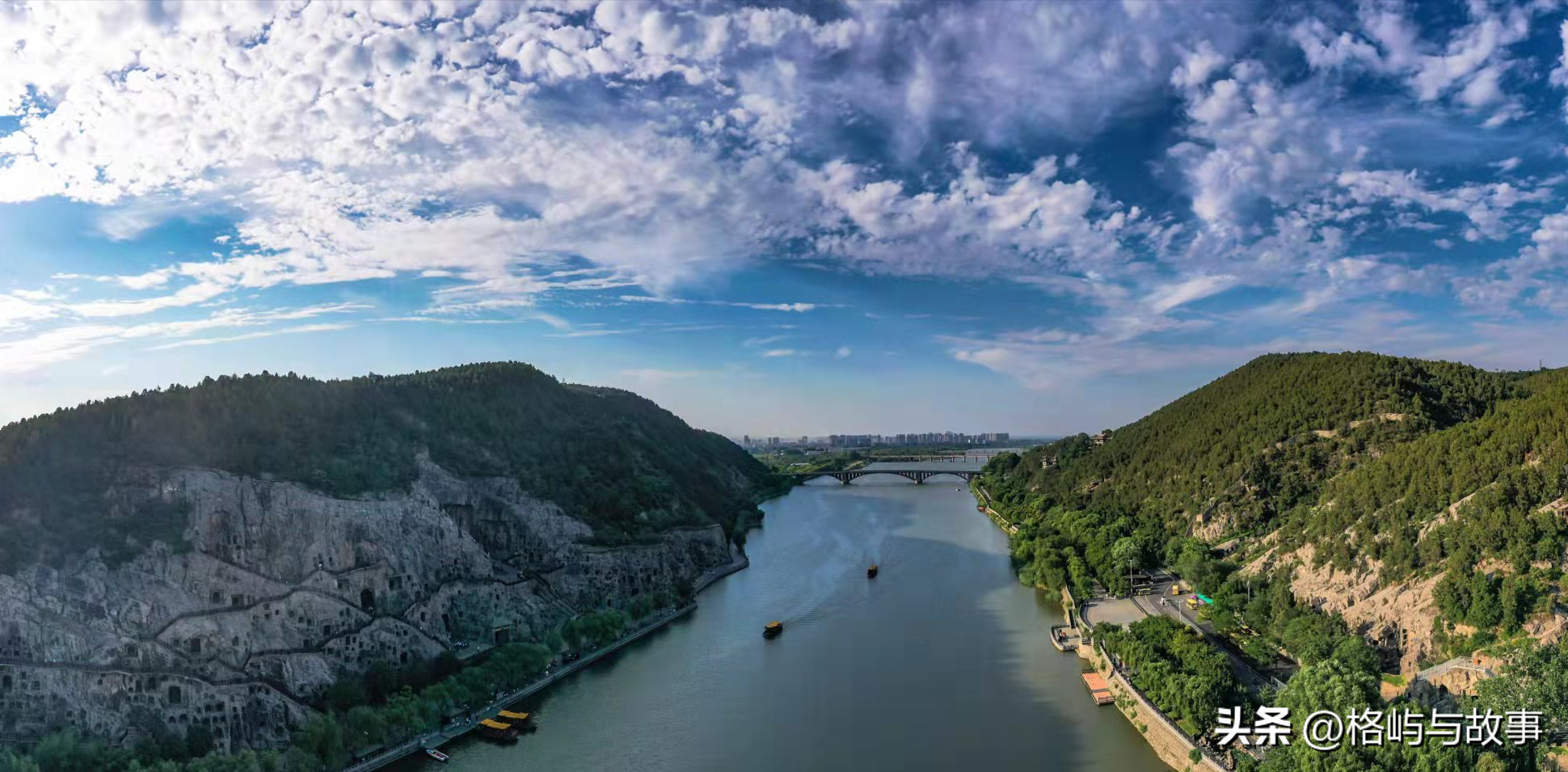
Yuyue Longmen

Carp jumping through the dragon gate
The legend of Yuyue Longmen happened at the location of the Longmen Grottoes in Luoyang today.
Li Bai's "Gift to Cui Jieyu": "The Yellow River has three-foot carp. Originally, it lived in Mengjin, but its forehead did not become a dragon, and it returned with ordinary fish." The "Mengjin" in the poem is now a county under the jurisdiction of Luoyang, facing the Yellow River to the north.
According to legend, after Yu Pi Yi Que, the water flow was rapid, and the carp that swam in the Yellow River in Mengjin (now a county under the jurisdiction of Luoyang) swam upstream along the waters of Luoyang and Yi. When they swam to the Longmen Gate of Yique (now the location of the Longmen Grottoes in Luoyang), the waves were monstrous, jumping one after another, intending to turn over. Those who jumped over were dragons, and those who could not jump left a black scar on their foreheads, so Li Bai, the great poet of the Tang Dynasty, wrote in his poem "Gift to Cui Jieyu": "The Yellow River has three feet of carp, and they were originally living in Mengjin, but their foreheads did not become dragons, and they returned with ordinary fish."
Fish leaping over the Dragon Gate, also known as carp leaping over the Dragon Gate, carp leaping over the Dragon Gate, etc. It is also a metaphor for moving against the current, striving for progress, career success or rising status
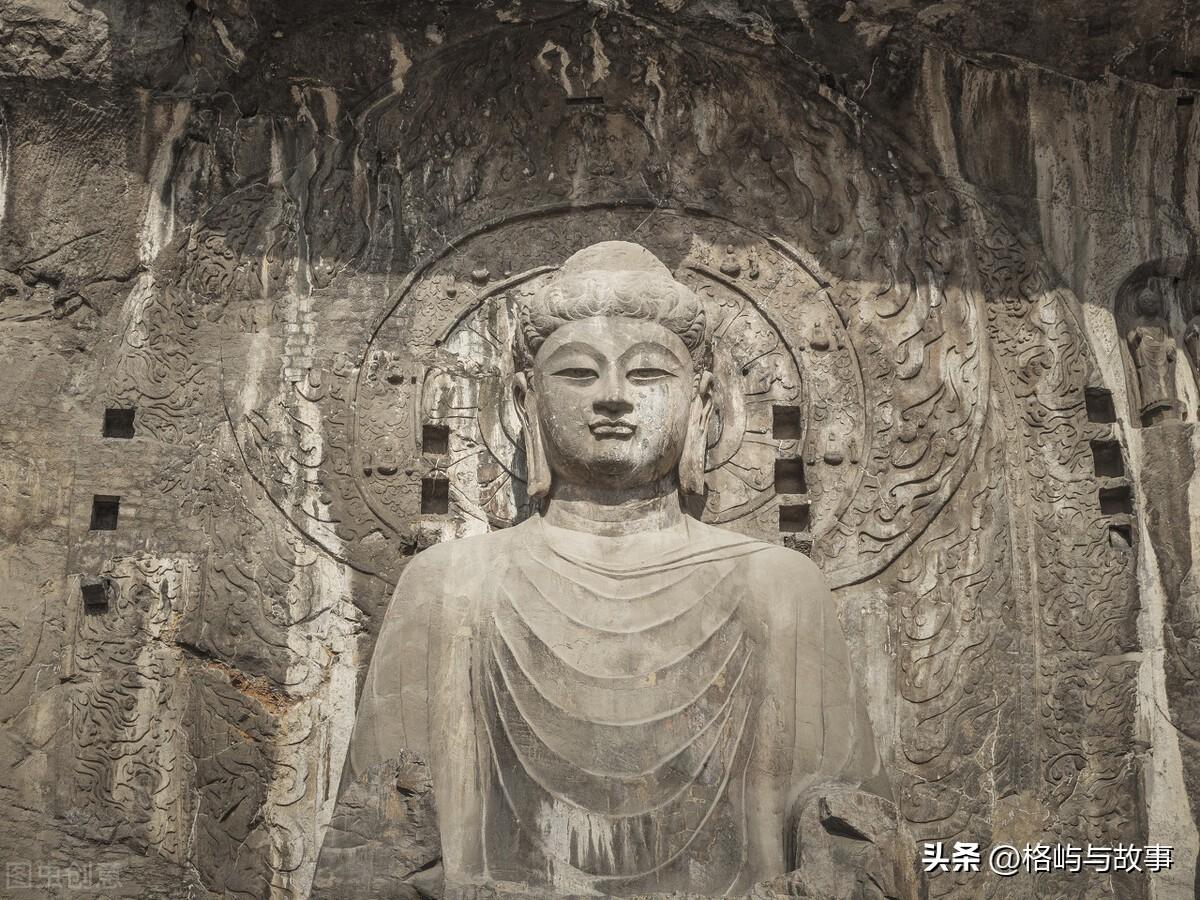
Lushena Buddha
Buddha statue: a total of nine bodies. The main Buddha in the middle is Lushena Buddha , yes Wu Zetian Carved according to his appearance and demeanor, the eldest disciple is on the right Kasyapa , the little disciple on the left Ananda , followed by Puxian Bodhisattva (Left) 、 Manjushri Bodhisattva (Right) , The heroic and vigorous king, the aggressive powerhouse and Lord Flushner constitute a group of artistic group images with a very modal texture.
Someone once said that when you stand in front of this great Buddha, no matter what angle you look at it from, her eyes are all desire-free and look at you indifferently.
And what impressed me the most about the grottoes is one of them: the Ten Thousand Buddha Cave, also known as the Ten Thousand Buddhas Listening to the Scriptures
Wanfo Cave is Luoyang, Henan Longmen Grottoes The cave inside is named after 15,000 small Buddhas carved neatly on the north and south sides of the cave. The most amazing thing is that each statue is only four centimeters high.
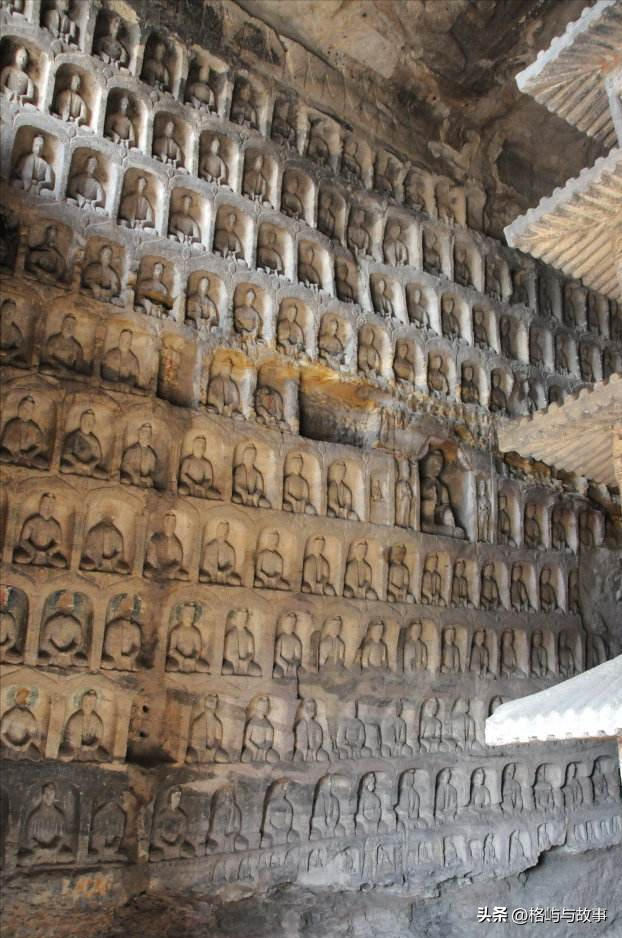
Ten Thousand Buddhas Listening to the Sutras
On both sides of the stone wall are Buddha statues about 4 cm high, all facing the middle. Inside the stone wall is a large Buddha that seems to be preaching sutras. Although the stone Buddha is small, its facial features are clearly visible. If you don't go to the scene, you won't be able to appreciate the ingenuity of the ancients. Because of the entrance of the Ten Thousand Buddha Cave, I, a person of 180 catties, can't get in at all. You can imagine how difficult it was at that time.
Tribute to the ancients!
The second stop, Baima Temple
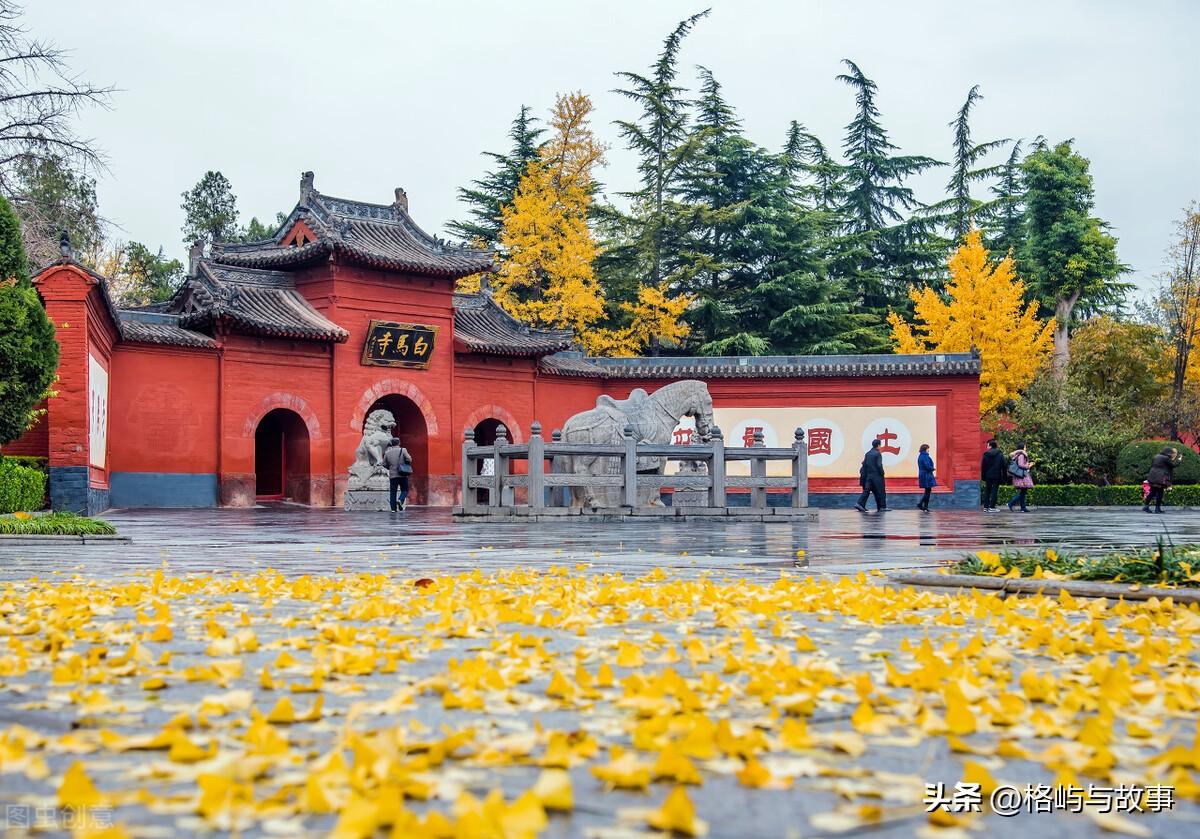
White Horse Temple, No. 1 in China Ancient Temple , the holy place of Buddhism in the world. was built in Eastern Han Dynasty In the 11th year of Yongping (AD 68), it was the first official monastery built after Buddhism was introduced into China China. 、 Vietnam 、 North Korea 、 Japan And Europe and America National " Shi Yuan "And" Ancestral court ”。
The third stop:. Zhouwangcheng Tianzi Drive Six Museum:
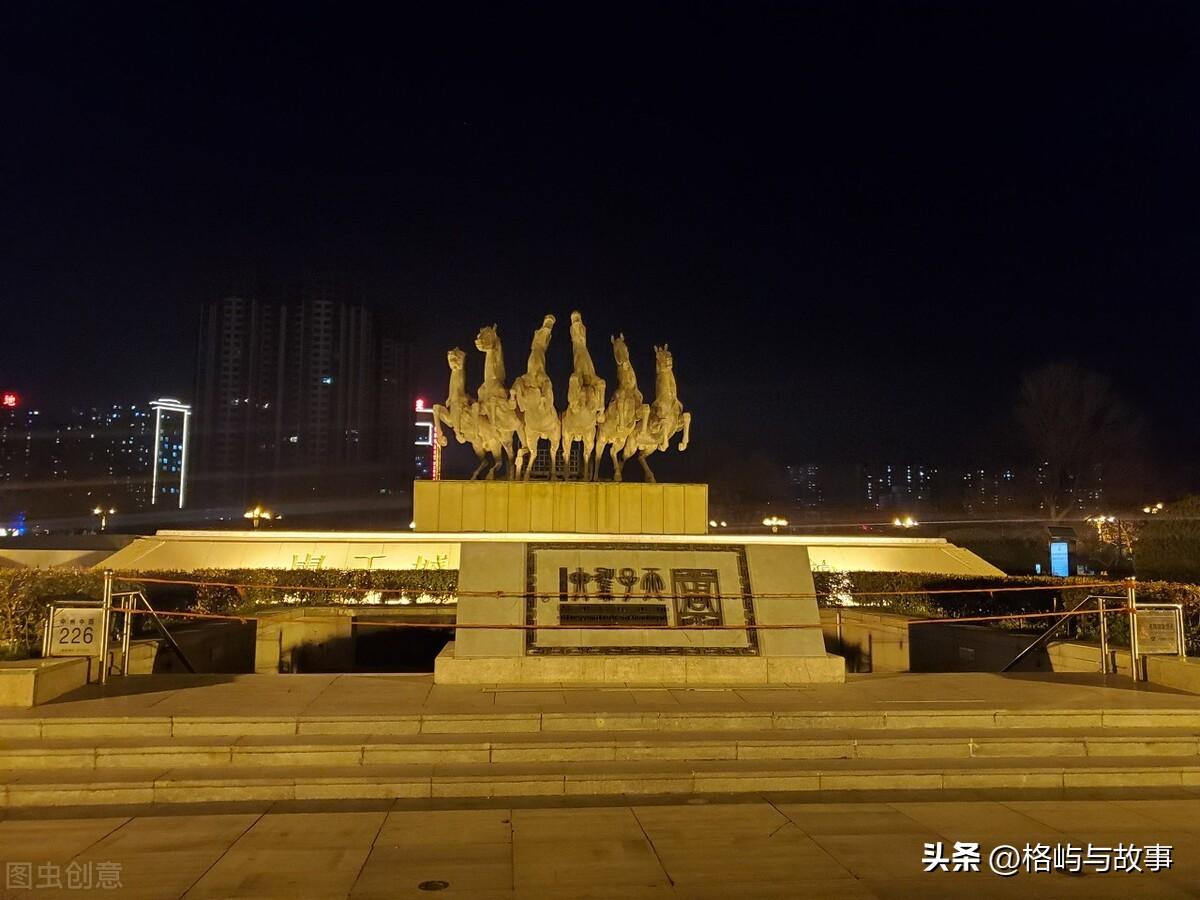
The museum is located in Dongzhou Wangcheng Square, Xigong District, Luoyang City. It was excavated in 2002. The core of the museum is the chariot and horse pit of "Tianziliu Liu", which dates from the middle of the Eastern Zhou Dynasty (about 500 BC). The chariots and horses are large in scale, diverse in model types, neatly arranged and magnificent in momentum. They are extremely rare relics of "Drive Six". The museum is also supplemented by three special cultural relics of the Eastern Zhou Dynasty: "Royal City, Royal Tomb, and Royal Artifacts".
The fourth stop: Guanlin (you can learn about the story of defeated Maicheng)
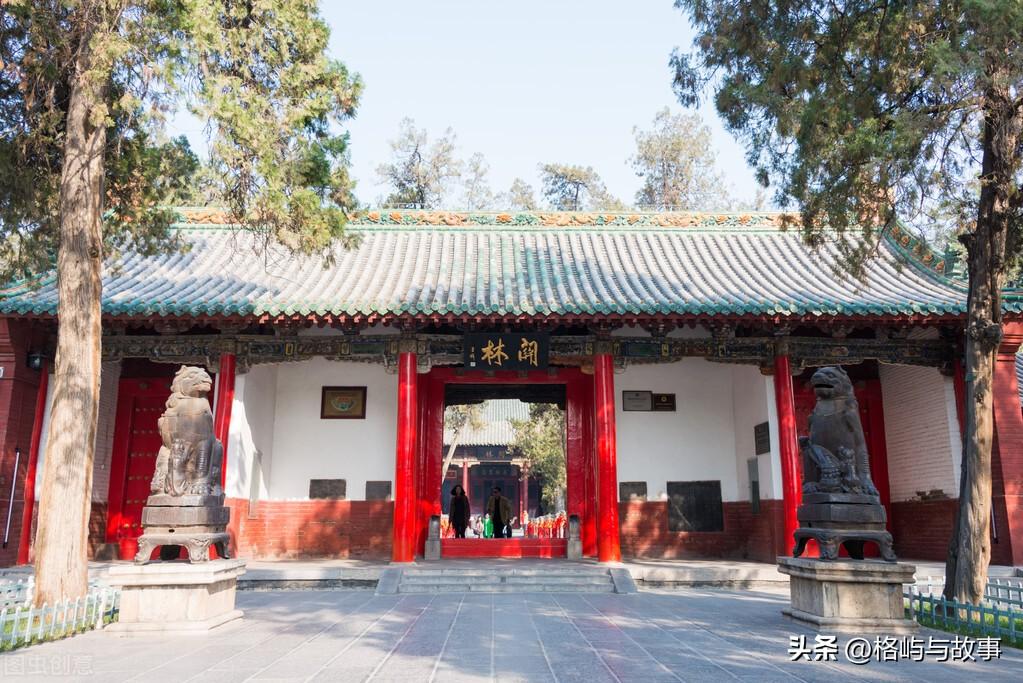
Guanlin, located in Henan Province Luoyang Guanlin Town, Luolong District, City, for burial Three Kingdoms Shi Shu general Guan Yu It is one of the three major Guan temples at home and abroad. Among the thousands of Guan temples, it is uniquely called "Lin". It is the only ancient classic building in which the tomb, temple and forest are combined into one. Now National key cultural relics protection unit , a national AAAA-level tourist attraction.
In 2008 by Luoyang City Declared Guan Gong's Faith and Custom , has been State Council Determined as national level Intangible cultural heritage (No. 992 X-85), Guan Lin as National List of Intangible Cultural Heritage “ Guan Gong's Faith and Custom "The heritage site has become a cultural treasure shared by all mankind. In 2019, Luoyang Guanlin was listed as a World Cultural Heritage" Wan Li Tea Ceremony "The heritage site of the application project.
The fifth stop: Sui and Tang Grand Canal Cultural Museum

Luoyang Sui and Tang Grand Canal Museum is located in Luoyang City, Henan Province , which was built by relying on the ancient building complex Shanshan Guild Hall, a national key cultural relics protection unit on the north bank of the Luohe River.
Part 2, Natural Scenery
First stop: Laojun Mountain
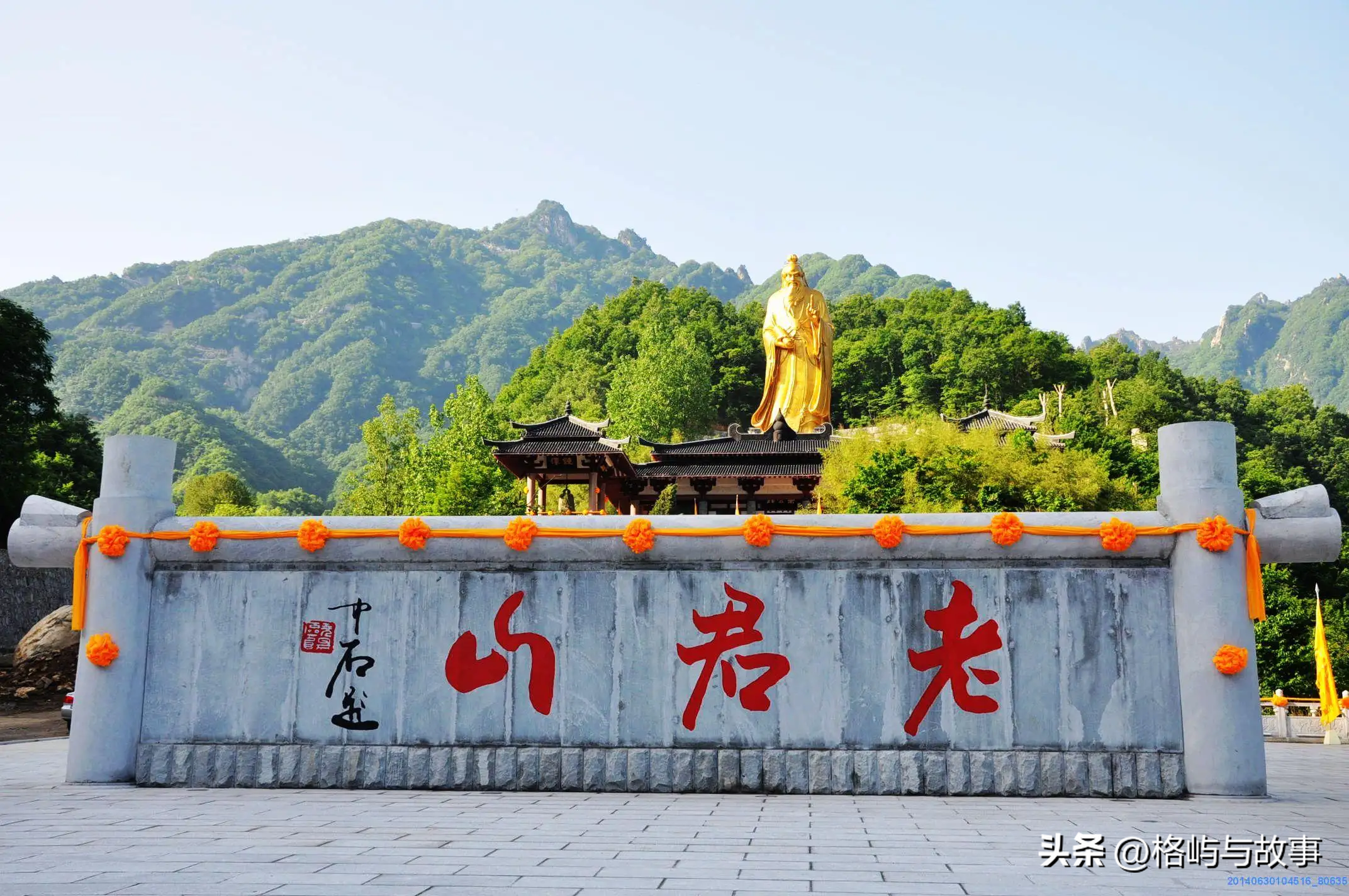
The Laojun Mountain, "The Unparalleled Holy Land in the World, the No. 1 Immortal Mountain in the World". Originally known as Jingroom Mountain, it is located three kilometers southeast of Luanchuan County, Luoyang, the ancient capital of the Thirteen Dynasties. The main peak of the 800-mile Funiu Mountains, the top of the Jade Emperor, is 2217 meters above sea level. It has a humanistic history of more than 2,000 years and is the longest mountain range in Taoism.
Laojun Mountain was formed during the continental orogenic movement 1.9 billion years ago. During the Spring and Autumn Period, Lao Tzu Li'er, who was recognized as the ancestor of Taoism, went into seclusion and practiced here, making it a "Daoyuan" and "Ancestral Court". The Northern Wei Dynasty began to build Laojun Temple on it to commemorate it. In the 11th year of Zhenguan (637), Emperor Taizong of the Tang Dynasty rebuilt Jingroom Mountain Tieding Laojun Temple and gave it the name "Laojun Mountain", which became a holy place for Taoism's mainstream Quanzhen school. In the 31st year of Wanli (1603), Emperor Shenzong of the Ming Dynasty decreed that Laojun Mountain was a "famous mountain in the world", and spent money to build a temple, becoming the only Chinese mountain in history to be named a "famous mountain in the world" by the emperor.
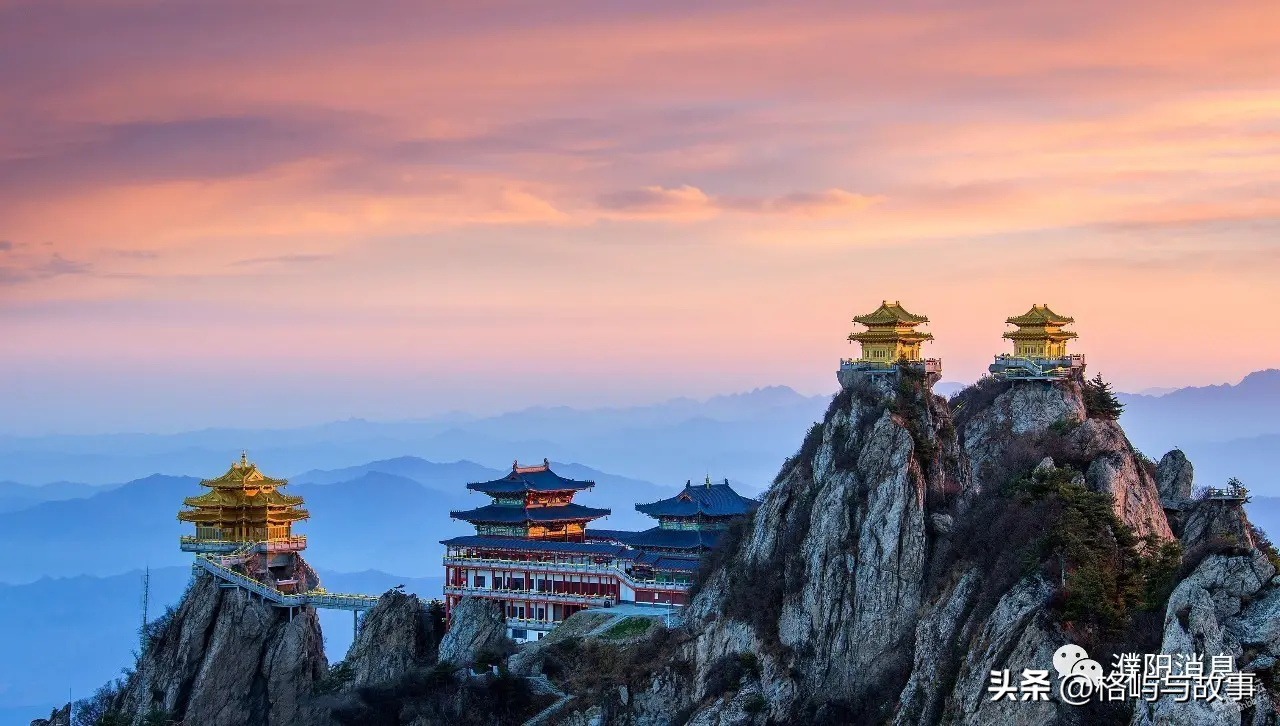
Laojun Mountain landscape area 6, there are 179 scenic spots, Taiqing Palace, Shifangyuan, Lingguan Hall, Vinegar Hall, Shepherd's Fence, Suffering Hall, Chuan Lou, Guanyin Hall, Sanqing Hall, Laojun Temple and other temples 16. There are more than 3,000 mu of stone forest landscape on the south side of Mane Ridge open to tourists, known by geologists as "Northern Stone Forest".
There is a small topic: Laojun Mountain is not open to foreigners.
One of the reasons is that it is located in Luanchuan County, which is said to be close to the Luanchuan military base. Although this military base is no longer in use today, in order to avoid revealing military secrets, foreigners are prohibited from entering Laojun Mountain for tourism. Moreover, Laojun Mountain is known as the place closest to the immortals. It is said that if you are lucky, you may see Buddha light on the top of the mountain.
Regarding the beauty of Laojun Mountain, more Douyin can actually be seen. It is almost a 2-hour high-speed drive from the city. In addition, the price on the mountain is not expensive.
The second stop: Cockscomb Cave (many natural landscapes are in Luanchuan)
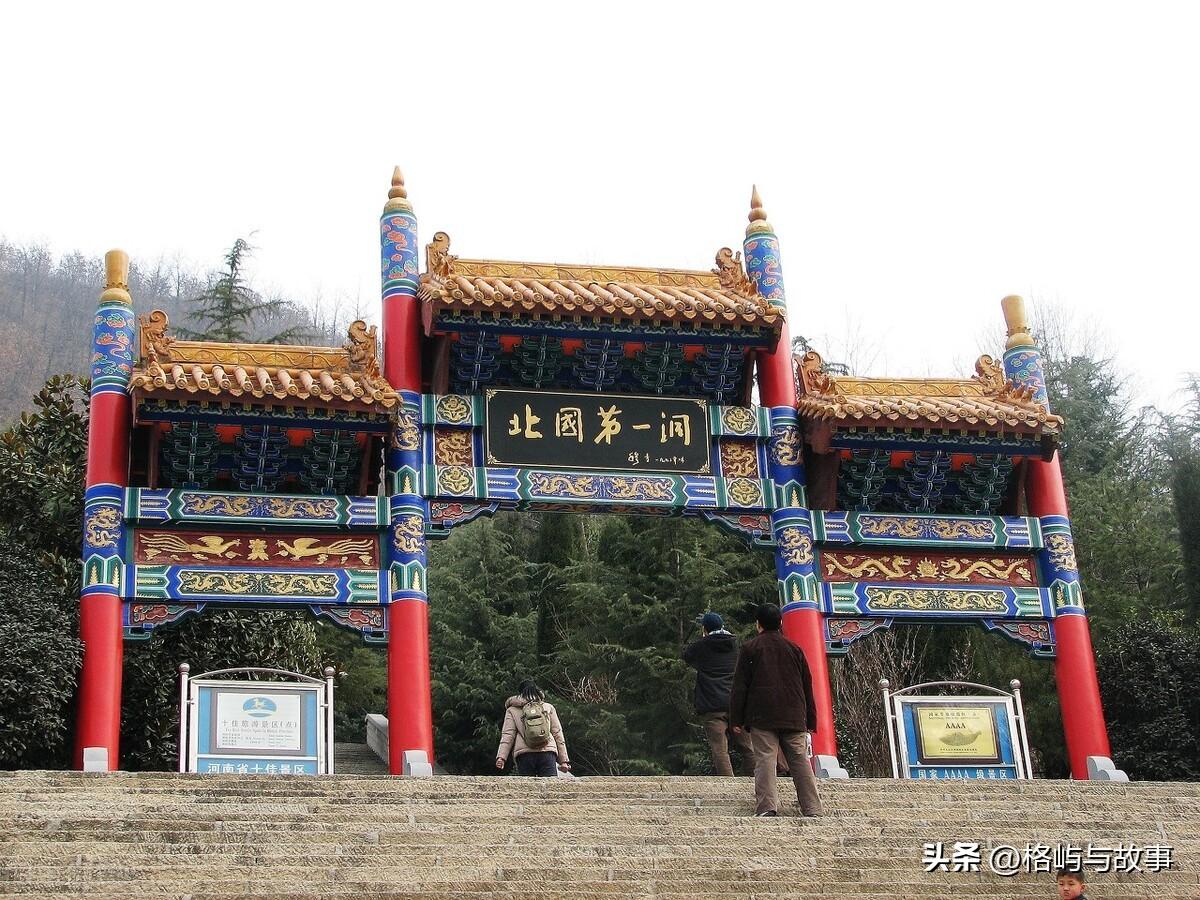
Jiguan Cave is located in Luanchuan County, Luoyang City, Henan Province, three kilometers west of the county seat, halfway up the Jiguan Mountain in the Funiu Mountain branch of the Qinling Mountains, with an altitude of 1021 meters.
Cockscomb Cave is a large limestone cave with karst karst landform. Cockscomb Cave is 5,600 meters long, with an ornamental length of more than 1,800 meters and an ornamental area of 23,000 square meters. Such caves are rare in the north and are known as the first cave house in the North.
On January 9, 2012, it was awarded the title of National 5A-level Tourist Scenic Spot by China National Tourism Administration.
From February 16th to March 31st, 2022, Cockscomb Cave will participate in the "Yubi Spring · Huiyou Hometown" activity, and the first ticket will be free for tourists.
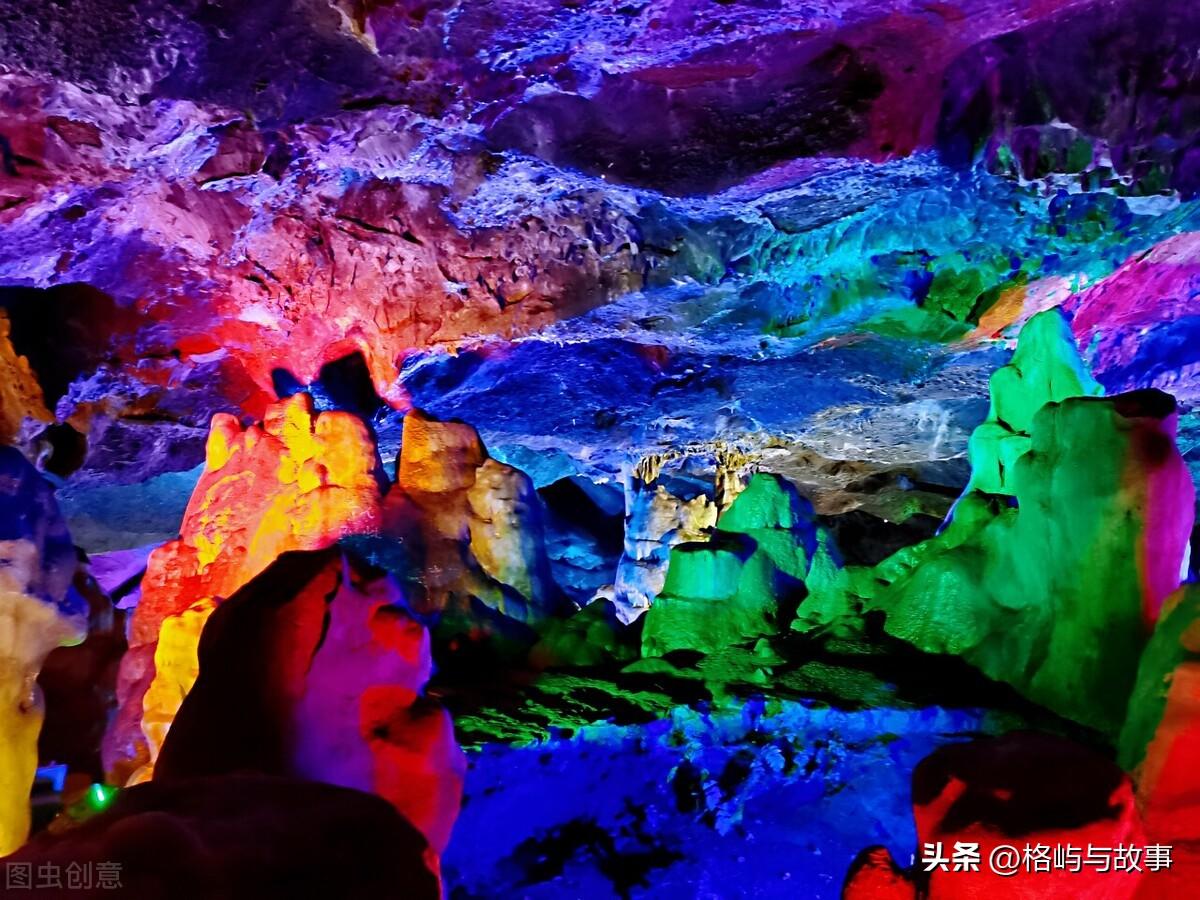
Regarding the discovery of the Cockscomb Cave, there is a local folk story: Legend has it that a long, long time ago, on the hillside outside the cave, an old farmer was hoeing, and suddenly, he saw a white fox with a hen in his mouth, running from him. The old farmer wanted to get the white fox, so he threw down his hoe and chased after him, but the white fox introduced the old farmer into the cave from the small hole. After the old farmer came in, he did not catch the white fox, but found this underground shrine. There is also such a record in Zhizhong, Luanchuan County: The Cockscomb Cave is from north to south, you can bend down and enter, and you can walk a hundred steps. There are four halls that are several feet high; there are woodcutters, who operate swords and hold sticks and enter in groups. Unpredictable, afraid and returning... This fully proves that a long time ago, some people have ventured to the Cockscomb Cave to explore the seclusion.
Part 3: Food
Like Kaifeng, Luoyang, as the head of the ancient capital, has a lot of delicious food left over. The most impressive thing for me is the cultural heritage: Xiaojie Pot Stickers

As early as the Northern Song Dynasty, pot stickers were popular in Kaifeng, Luoyang and other towns in the Central Plains, and then spread in the cities around Jiangsu and Zhejiang with the Southern Song Dynasty, and made their taste and production technology develop and enrich. Now popular in many cities and hotels in the Central Plains centered on Luoyang, large and small, but the most famous "Xiaojie" pot stickers are one of the representatives of famous dishes in Henan. What do you think of the Xiaojie pot stickers? Half burnt and half soft and waxy pot stickers look more delicate against the golden yellow oil sauce. Take a bite and there will be soup flowing out, accompanied by a faint scent of scallions, which makes people want to stop. The dependence on Xiaojie pot stickers is deeply rooted in the bones of Luoyang people.
Second stop: Luoyang water mat
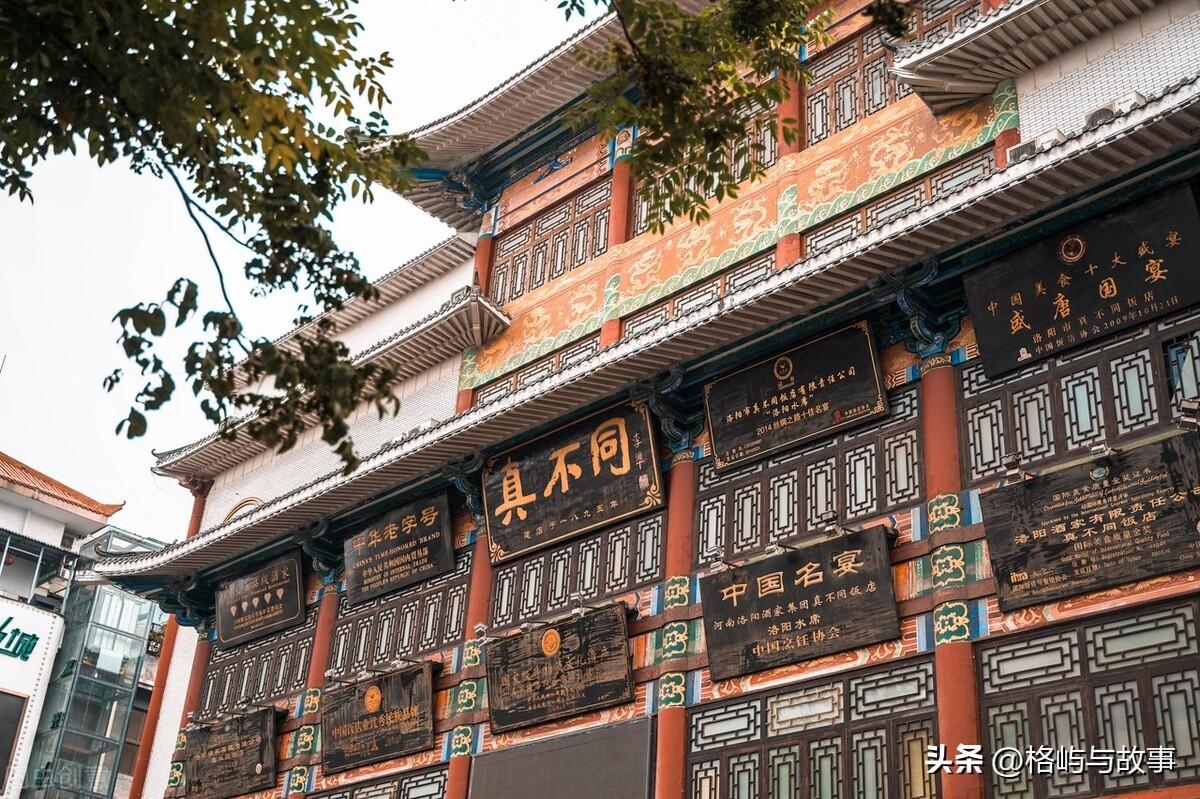
Luoyang water mat is a traditional and famous feast in Luoyang, Henan Province, belonging to the Henan cuisine department. Luoyang water mat began in the Tang Dynasty and has a history of more than 1,000 years. It is one of the longest-standing famous banquets in China so far.
Luoyang water mat has two meanings: one is that all hot dishes have soup-soup and water; the other is that after a hot dish Luoyang water mat is finished, it is taken up again after withdrawal, and it is constantly updated like running water. Luoyang water mat is characterized by meat and vegetarian, wide selection of materials, simplicity and complexity, various flavors, sour, spicy, sweet, salty, comfortable and delicious.
On September 10, 2018, "Chinese food" was officially released, and "Luoyang water mat" was rated as one of the top ten themed banquets of "Chinese food" in Henan.
According to legend Yuan Tiangang Watching the sky in the early years, knowing Wu Zetian In the future, he wanted to be emperor, but the secret of heaven could not be leaked, so he designed this big feast, which heralded the twenty-four years after Wu Zetian Wine and meat Situation. Every dish, soup and water, alludes to Wu Zetian's natural formation; dry and rare, refers to Wu Zetian's twenty-four-year relationship (rare). "Luoyang Water mat "The order of the dishes is the first eight grades (cold cuts), four town tables, eight large pieces, and four sweeping ends, with a total of twenty-four dishes, which just corresponds to Wu Zetian's control of the dynasty from the first year of Yonglong to the death of Luoyang in the first year of Shenlong Shangyang Palace Twenty-four years.
The third stop: Luoyang donkey meat soup, beef soup
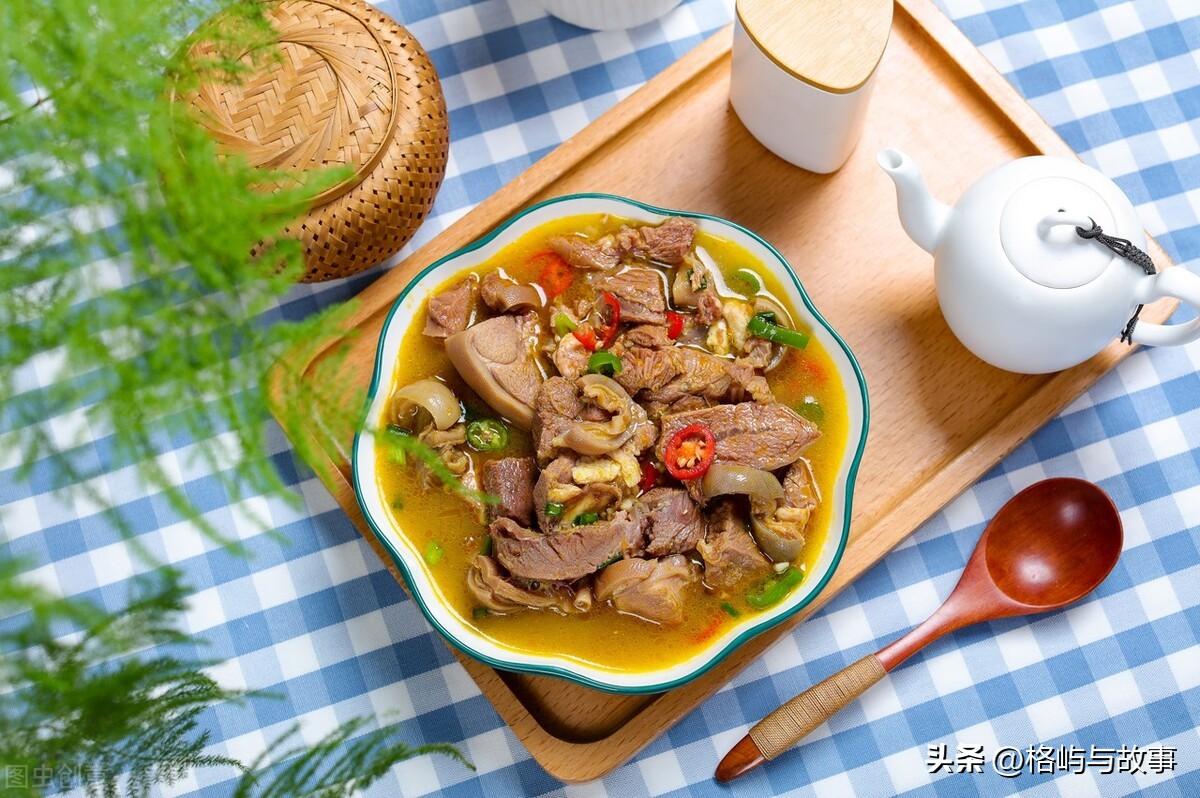

Many soups in Luoyang are famous, such as beef soup, donkey meat soup, and crucian carp tofu soup. These two soups in Luoyang are like Kaifeng's mutton soup, which are all local delicacies.
Final article:
In fact, Luoyang is vast and rich, and there are still many attractions that have not been mentioned, too many.
Let's take a step down the stairs:
The first ladder: Longtan Grand Canyon, Baiyun Mountain, Daimei Mountain
The second ladder: looking at peonies in Wangcheng Park, Luoyang Museum, Chongdugou
Wait, wait, there are too many, I won't list them one by one. If you want to play, you can search according to your preferences!
Editing is not easy, if you want to know more about Henan and other provincial attractions, please follow me!
